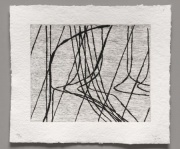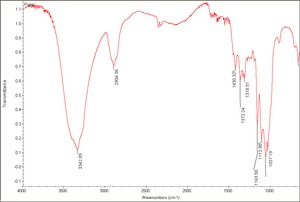Paper
Description
A thin, man-made sheet of matted Cellulose fibers. Paper sheets are molded from a slurry of macerated fibers. The technique for making early handmade paper from vegetable fibers was patented in 105 CE by Ts'ai Lun in China. Ancient Egyptians made Papyrus from coarse fiber strips of the paper reed plant. The first European paper making mill was established about 1085 CE in Spain. Paper is made from a variety of cellulose sources, such as Grass, Linen, Cotton, Wood, Paper mulberry, Straw, Bagasse, Esparto grass, Bamboo, and Jute. Paper is used for writing, printing, drawing, wrapping, and covering walls. Good quality paper contains a high proportion of cellulose, such as those made from cotton or linen rags. Poor quality paper, such as produced by mechanical pulping of wood chips, contains one or more of the following: Lignin, residual Chlorine from bleaching, or excess Alum from sizing. Each of these components increases the acidity of the paper leading to the decomposition of the cellulose fibers.
Synonyms and Related Terms
papier (Ned., Fr., Deut.); carta (It.); papel (Esp., Port.); papper (Sven.)
Other Properties
| Density | 0.7-1.15 |
|---|
For paper fiber characteristics see individual species or pulping pages, such as: Cotton, Flax, Kozo, Oak, Aspen, Spruce, Yellow pine, Mechanical wood pulp, Chemical wood pulp, Sulfite process, Kraft process, Soda process.
Additional Information
- D.A.Barringer, "Paper: Manufacture, Types and History", The Dictionary of Art, Grove's Dictionaries Inc., New York, 1996.
- C.Rickman, "Paper: Preservation", The Dictionary of Art, Grove's Dictionaries Inc., New York, 1996
- D. Hunter, Papermaking – The history and technique of an ancient craft, Dover Publications, New York (1978)
Comparisons
Sources Examined for Information in the Record
- IPH – International Association of Paper Historians
http://www.paperhistory.org/news.htm
- Paper restoration glossary - Goethe Institut (in German, English, Japanese & Korean) - http://www.goethe.de/ins/cn/hon/pro/papier2/GLOSSAR_PAPIERRESTAURIERUNG-neu.pdf
° Technical Association of the Pulp and Paper Industry, Institute of Paper Chemistry, Appleton, Wisconsin. TAPPI Website
- R. J. Gettens, G.L. Stout, Painting Materials, A Short Encyclopaedia, Dover Publications, New York, 1966
- Reed Kay, The Painter's Guide To Studio Methods and Materials, Prentice-Hall, Inc., Englewood Cliffs, NJ, 1983
- Ralph Mayer, A Dictionary of Art Terms and Techniques, Harper and Row Publishers, New York, 1969 (also 1945 printing)
- Hermann Kuhn, Conservation and Restoration of Works of Art and Antiquities, Butterworths, London, 1986
- Tom Rowland, Noel Riley, A-Z Guide to Cleaning, Conserving and Repairing Antiques, Constable and Co., Ltd., London, 1981
- Boise Cascade Paper Group, The Paper Handbook, Boise Cascade, Portland OR, 1989 Comment: paper mills establish 1085 in Spain .... (paper made by hand until) invention of the paper machine in 1798 by Frenchman Nicolas Louis Robert
- Matt Roberts, Don Etherington, Bookbinding and the Conservation of Books: a Dictionary of Descriptive Terminology, U.S. Government Printing Office, Washington DC, 1982
- Pam Hatchfield, Pollutants in the Museum Environment, Archetype Press, London, 2002
- Encyclopedia Britannica, http://www.britannica.com Comment: "paper" Encyclopædia Britannica [Accessed October 24, 2001] - China in about AD 105. .. Central Asia by 751 and Baghdad by 793, and by the 14th century there were paper mills in several parts of Europe ....
- Art and Architecture Thesaurus Online, http://www.getty.edu/research/tools/vocabulary/aat/, J. Paul Getty Trust, Los Angeles, 2000
- Website address 1 Comment: www.scmre.org/analysis.htm
- Website address 2 Comment: Multilingual Glossary for Art Librarians at http://www.ifla.org/VII/s30/pub/mgl.htm
- CRC Handbook of Chemistry and Physics, Robert Weast (ed.), CRC Press, Boca Raton, Florida, v. 61, 1980 Comment: density=0.7-1.15

